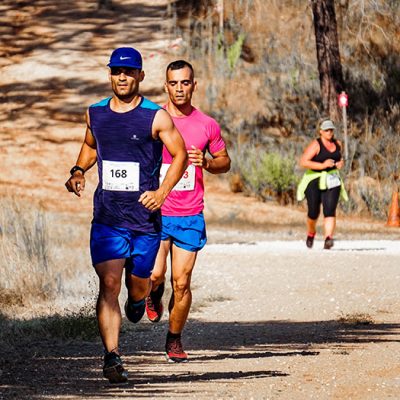Be consistent and take it easy at first. That’s the message you need to take on board when you want to start exercising again. It’s especially important after a long break and if you’re on the wrong side of 30.
So you’ve been away from exercise a few weeks, a few months, maybe longer. You’re now ready to “whip that body into shape”. This time you’re ready, you’re serious. You’ve made the time, the commitment, paid your money, joined the health club, the trainer, THIS IS IT!
Ready, Set, GO!
No, wait…. Not so fast!
Dangers of Going Hard at First
Before you dive head-first into your exercise, take a moment to understand the dangers of picking up where you left off. According to Cassie White, this is especially important if you lack a really strong fitness base that you’ve built up over years.
Though it seems reasonable to start where you left off, doing so can seriously hinder your future progress. Here’s why.
After the 3-week mark, you are officially de-trained, regardless of your physical condition, according to Dr Gerald Fletcher, a cardiologist and professor of medicine. It becomes especially important to ease into exercise after the age of 35, when the risk of heart problems begins to increase.
When you overdo exercise in the beginning, you can increase your blood pressure and heart rate to a degree that could be harmful to your heart’s health.
Racing into heavy exercise too soon also increases your risk of stress fractures, muscle strains, and tendonitis. The risk of these injuries increases with age.
Why Age is a Risk Factor
After age 30, blood circulation into some areas of the body decreases, especially in tough tendonous structures such as the rotator cuff (shoulder area) and heel cord (back of the ankle area).
Good blood circulation is important for the tendons to repair themselves after exercise. If you return to an activity suddenly, you haven’t allowed your body to gradually return circulation to your tendons. At this point, the chance of tendonitis occurring is high. If you ignore the pain and work through it, you risk permanent injury to the tendon.
If you’ve taken time off exercise and put on weight, your knees, low back and hips carry an extra burden. Jogging is probably not the best activity as you return to exercise.
Your Immune System Also Needs Building Up
Besides slowly developing your cardiovascular and muscular systems, you will need to build your immune system.
When you stop exercising, your immune system becomes weakened; your body decreases production of immune system strengthening chemicals. If you suddenly begin an intense exercise program, your body looks for these chemicals and can’t find them.
Your level of defense becomes lower and you become more susceptible to colds and flu. It takes a number of weeks of gentle exercise to get your body to produce those chemicals again.
Be Consistent as Your Body Adapts
The bottom line is, when returning to exercise, begin slowly and gently, allowing your heart, circulation, muscles, tendons and immune system to adapt to the changes.
The most important part of consistent exercise is the “consistent” part. Doing something active with your body every day will be much more beneficial than putting your body through the ringer once a year or so.









